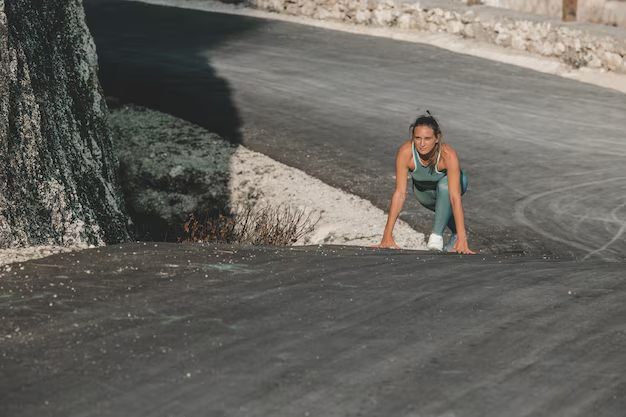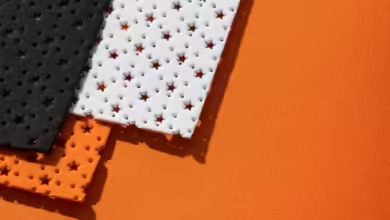Is hott in here marathon pave or gravel

“Hott in Here” Marathon: Choosing Between Pavement and Gravel
If you’re gearing up for the “Hott in Here” Marathon, choosing between pavement and gravel running can impact your performance and experience on race day. Here’s a guide to help you decide which terrain is best for you.
Pavement: Speed and Stability
Running on pavement is often favored by marathoners who prioritize speed and stability. Here are some pros and cons:
Pros:
- Speed: Pavement offers a consistent, firm surface, allowing for faster running times.
- Predictability: Paved surfaces are usually smoother and more predictable, reducing the risk of unexpected obstacles.
- Footwear Compatibility: Many running shoes are optimized for pavement, enhancing cushioning and support.
Cons:
- Impact on Joints: Pavement’s firmness increases the impact on joints, which may lead to discomfort or injury over time.
- Limited Scenery Variation: Pavement routes may lack the natural beauty and variety often found in gravel trails.
Gravel: Cushion and Connection with Nature
Gravel running provides a softer, more varied experience, which some runners find appealing for its natural feel. Consider these aspects:
Pros:
- Lower Impact: The softer surface reduces impact on joints, which can be gentler for long-distance running.
- Scenic Appeal: Gravel routes often lead through parks or rural areas, adding a refreshing scenic element.
- Strength and Stability: Gravel’s uneven surface engages stabilizing muscles, enhancing balance and strength.
Cons:
- Reduced Speed: Gravel’s softer texture and loose rocks may slow you down.
- Higher Risk of Rolling an Ankle: Gravel’s unevenness can lead to more slips or ankle twists if you’re not cautious.
Which is Right for You?
For speed-focused runners aiming for a personal best, pavement may be the optimal choice. If you prefer a gentler surface that offers a natural experience, gravel could be ideal. Consider mixing in both surfaces during your training for a well-rounded approach to the “Hott in Here” Marathon.
Here’s a deeper dive into each terrain, including tips for training, managing terrain transitions, and choosing the best gear for the “Hott in Here” Marathon.
Training for Pavement Running
Training for a marathon on pavement requires a specific focus on joint and impact management. Since pavement has minimal give, each step can strain your knees, ankles, and hips. Here are some tips:
- Strengthen Key Muscles: Incorporate strength training exercises that target your legs, glutes, and core. This support helps absorb impact and reduces injury risk.
- Practice Joint Recovery: Include regular stretching and foam rolling to release muscle tension from repetitive high-impact movements.
- Gradually Increase Distance: Avoid sharp increases in mileage; gradually build up to your target distance to help your body adjust.
Pavement also requires footwear with substantial cushioning, particularly if you’re prone to joint discomfort. Opt for running shoes designed for road racing with excellent shock absorption and arch support.
Training for Gravel Running
Gravel running is more forgiving on joints but demands agility and stability, as the surface can vary with loose rocks and undulating paths. If you choose gravel for your marathon, focus on:
- Balance and Stability Workouts: Train with exercises that enhance balance, such as single-leg stands, Bosu ball exercises, and agility drills. These help prepare you for uneven terrain.
- Strengthen Lower Legs and Ankles: Gravel runs can strain stabilizing muscles in the lower legs and ankles. Focus on calf raises, ankle mobility drills, and balance exercises to build these muscles.
- Wear Trail-Friendly Footwear: Invest in trail running shoes with solid grip and support designed for mixed or softer terrain. Look for shoes with rock plates and reinforced toe caps for additional protection.
Terrain Transitions: Combining Pavement and Gravel
Some marathons, particularly trail marathons or those in varied settings, may incorporate both pavement and gravel. Transitioning between surfaces can be tricky, as each requires different pacing and footing. Here’s how to manage transitions smoothly:
- Adjust Your Stride: For pavement, aim for a shorter, faster stride to minimize joint impact. On gravel, lengthen your stride slightly for stability and keep your gaze focused on the path ahead to navigate obstacles.
- Practice Both Terrains in Training: If the “Hott in Here” Marathon combines both surfaces, add varied terrain workouts to your routine. Try running on gravel trails and pavement sections within the same session to practice adjusting your gait and pace.
- Adapt Your Gear for Flexibility: Choose shoes that balance grip and cushioning if your marathon includes both terrains. Look for hybrid trail shoes that provide adequate cushioning for pavement but have enough grip for gravel.
The Mental Element: Staying Focused in Changing Conditions
Whether on gravel or pavement, marathons are mentally challenging, especially as you adjust to different terrains. Maintaining focus can be more difficult on gravel, where you must stay alert for rocks, dips, and loose ground. Pavement runs, meanwhile, can test your endurance and concentration as you deal with monotony and high impact.
Here are some mental strategies to stay focused:
- Visualize the Route: Familiarize yourself with the course if possible. This will help you mentally prepare for any shifts in terrain and anticipate potential challenges.
- Set Milestone Goals: Break the race into sections, setting small milestones to keep your motivation high and your focus sharp. For example, set a pace goal for pavement sections and a stride focus for gravel.
- Adapt to Weather Conditions: If the marathon is held in warm weather, like the “Hott in Here” name suggests, stay mindful of hydration and heat management. Gravel paths may retain heat differently than pavement, so be ready to adjust based on weather and terrain.
Final Thoughts
Choosing between pavement and gravel for the “Hott in Here” Marathon ultimately depends on your goals and preferences. Whether you favor the fast, steady pace of pavement or the natural feel and joint relief of gravel, training on both terrains is beneficial. Adapting your training and gear can set you up for success, no matter what the course throws at you. Embrace the journey and the challenge, and enjoy every stride!




